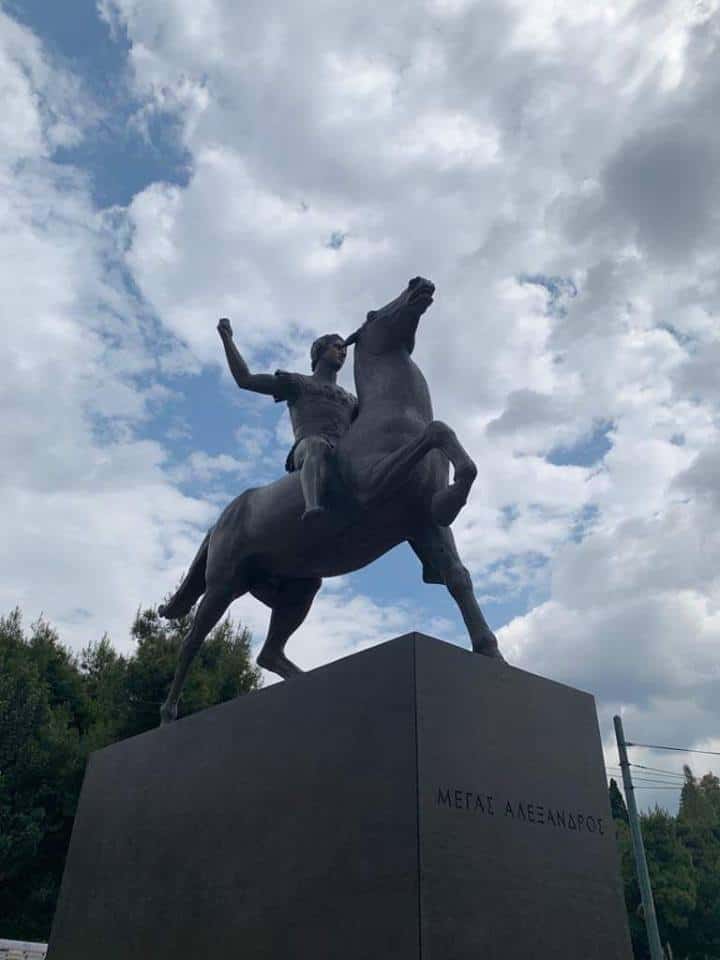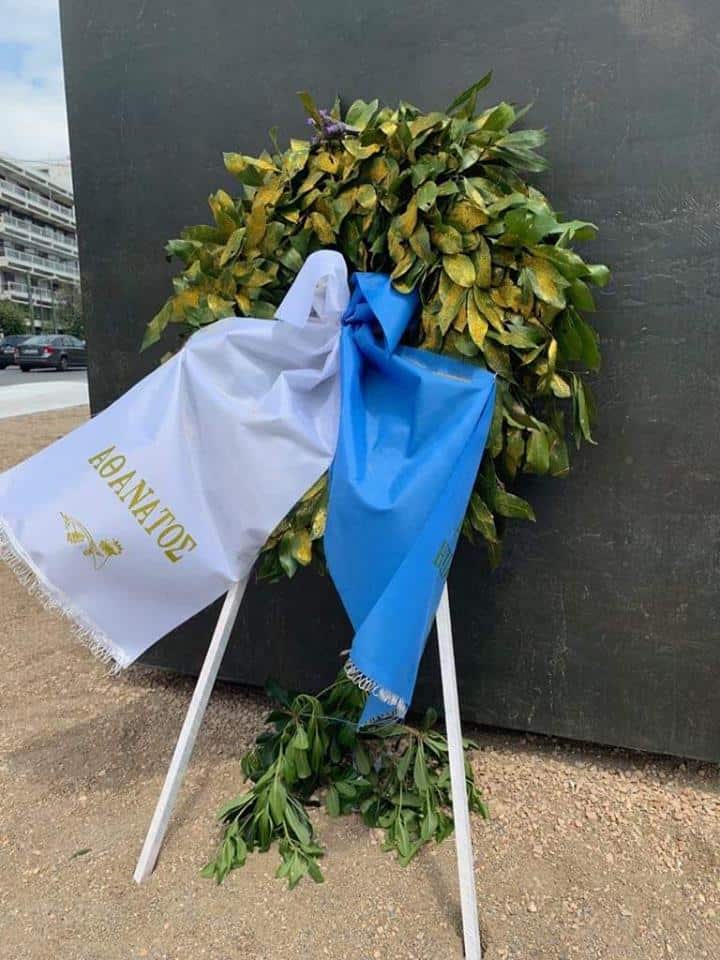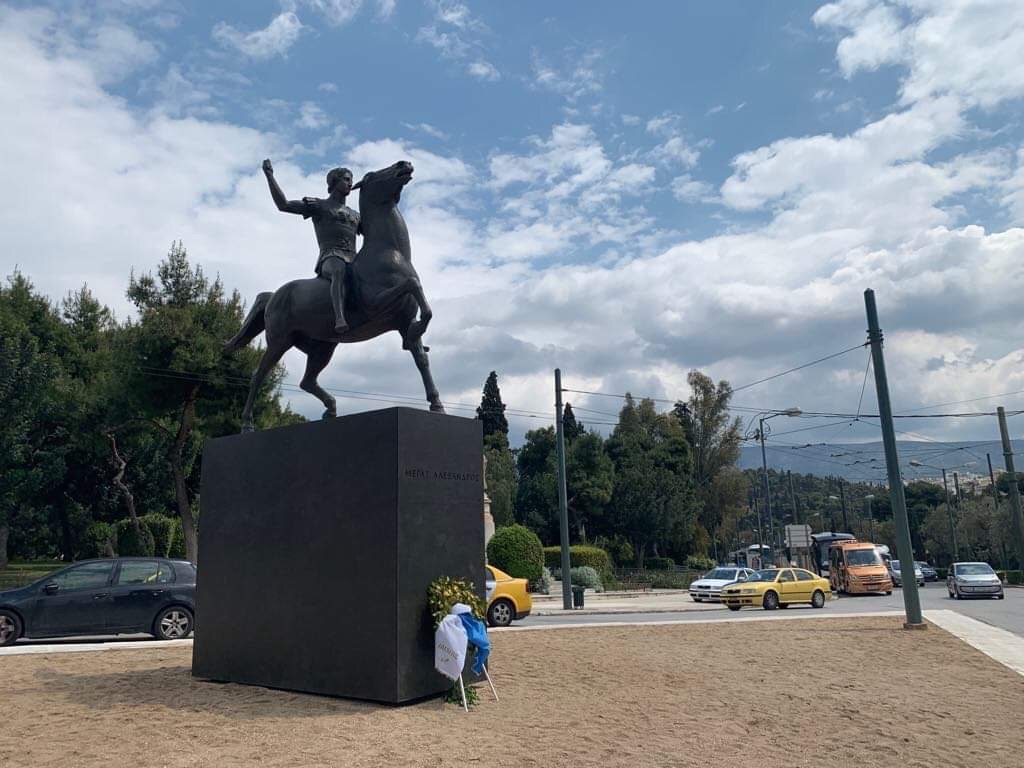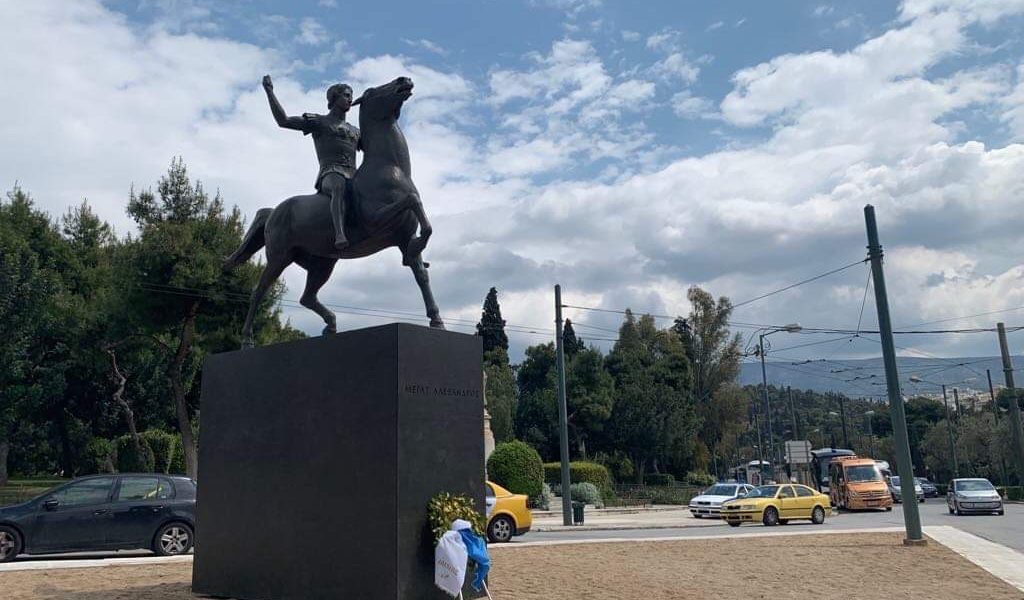
An imposing, 3.5 metre-high, 1,200kg statue of Alexander the Great, completed by acclaimed sculptor Yiannis Pappas in 1972 (after decades of intensive study) now graces the Greek capital. On April 19th, the statue was officially unveiled by the Mayor of Athens Giorgos Kaminis at the crossroad between Vas. Amalias Ave and Vas. Olgas Ave, with Hadrian’s Arch standing in the distance. The young Alexander (thus not yet in his military years) faces the sea, with one hand holding his horse’s reigns and the other thrown up in the air as if in triumph. It stands on a square base designed by architect Pandelis Nikolakopoulos that’s made of the same metallic material as the statue.


"Today we are upgrading our cultural heritage," Mayor Kaminis said, “while simultaneously materialising a promise that the Athens Municipality made many years ago. Here, where Amalias and Olgas Avenues meet, we are placing a work of incredible artistic value. That of Alexander the Great crafted by the leading Greek sculptor Yannis Pappas; and today, 15 years after his death, its long journey reaches its end.
The statue was first presented to the public at a retrospective exhibition on Pappas’ works in the National Gallery in 1992. It was bought by the Ministry of Culture in 1993, which gifted it to the City of Athens in 2001. Since then, the municipal authorities had failed to find the appropriate place to position the impressive statue, now a new landmark in the city.

Pappas began studying and sketching the artwork in 1941 during the German Occupation, an act that art historians have described as the artist’s personal inspiration for the rebellion of his nation’s identity during a period of such horrifying oppression. The sculptor had served at the Greek-Italian front, from where he returned on foot. In designing Alexander’s head, the sculptor took inspiration from the marble statue in the Archaeological Museum of Constantinople, and for his attire, he collaborated with Andonis Fokas, the highly respected costumier at the National Theatre. He based the overall statue on a mosaic titled “Alexander Launches an Attack Against Darius” in Pompei. The placement of the statue was funded by the Benaki Museum.
*All images by Alexia Amvrazi for Greek City Times (Copyright)


